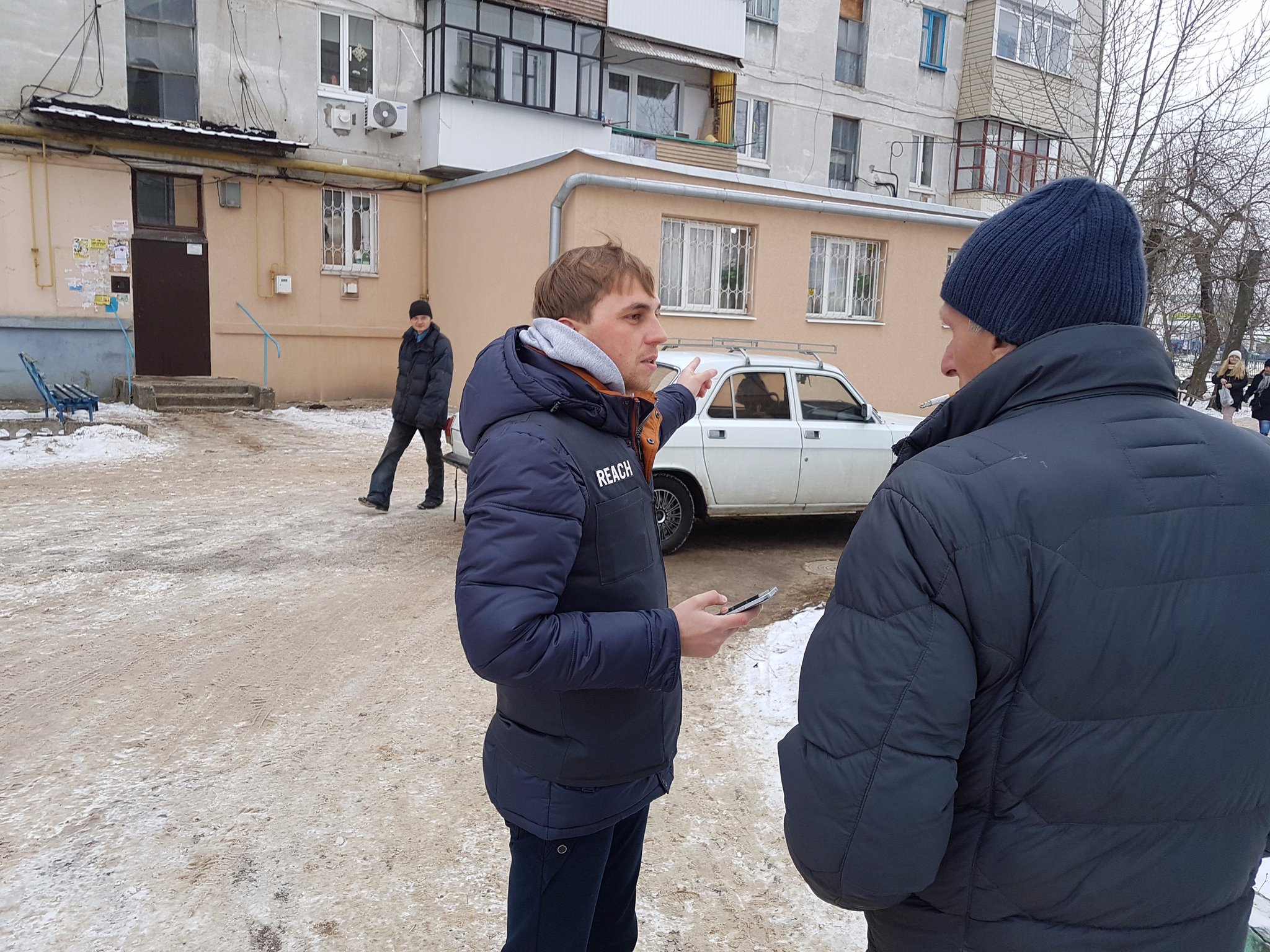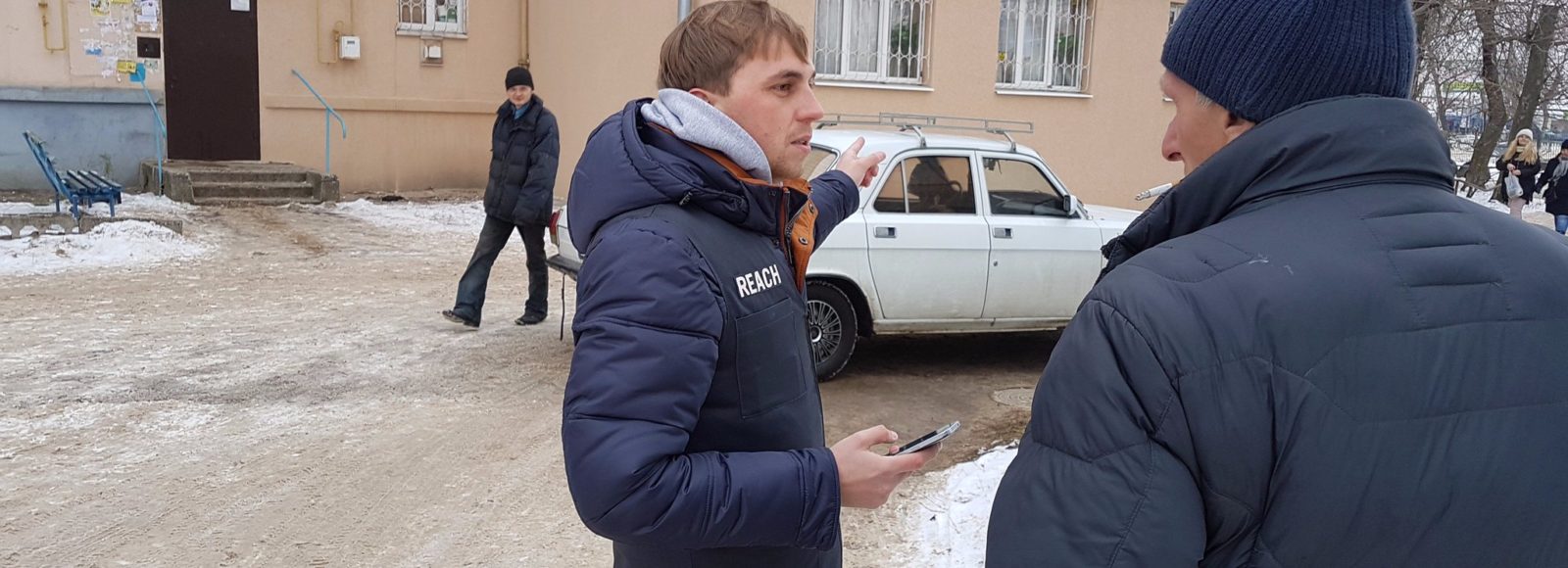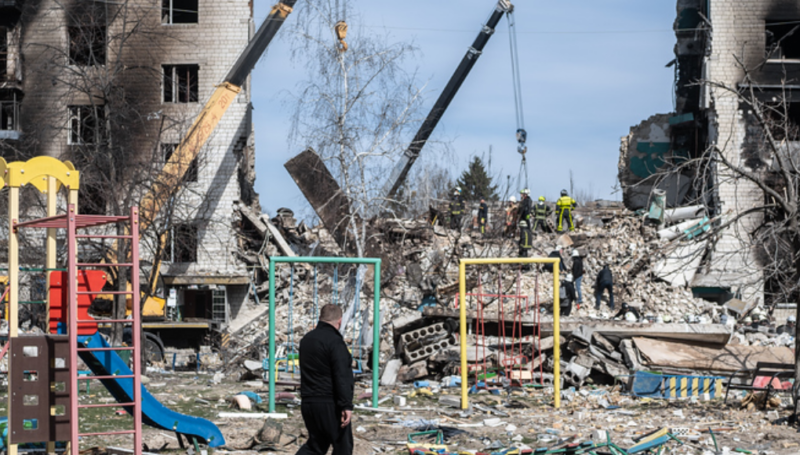
REACH collects information during the winter data collection exercise covering an area of approximately 127,000 km2 ©REACH/2017
Three years into the conflict that opposes the Government of Ukraine and separatist forces in Donetsk and Luhansk, it has become increasingly urgent to understand the consequences of war on labour markets and enterprises in East Ukraine. Large areas of Ukraine’s industrial heartland are now in the non-government controlled areas and, even in the government-controlled areas, supply chains, industrial infrastructure and trading networks have been disrupted by the conflict. The extent of this disruption and the consequences have not been analysed in depth until now, hindering efficient medium-term recovery programming to respond to such challenges and support sustainable livelihoods.
With funding from EU Humanitarian Aid and the Office for US Foreign Disaster Assistance (OFDA), REACH conducted an assessment between December 2016 and March 2017 to inform livelihoods interventions supporting local enterprises and the working age population in eastern Ukraine. REACH used a mixed methodology combining both qualitative and quantitative data collected from a range of sources (720 household-level surveys; 700 enterprise surveys and 10 key informant interviews) and covering the five oblasts of Ukraine most seriously impacted by the conflict, namely Donetsk, Luhansk, Dnipropetrovsk, Kharkiv and Zaporizhia.
Key findings from the assessment highlight that businesses are suffering from disrupted trade relationships and a lack of demand for products, with 70% of assessed businesses reporting decreasing revenues since the conflict began. Businesses assessed also identified a skills gap that makes recruitment difficult. There is a lack of skills development because vocational training centres are not operating at pre-conflict levels and access to university education is difficult for some students. Access to credit for businesses in the eastern oblasts is also low, with few banks willing to loan and consequently high interest rates. In addition, there is little foreign investment in the area, while facilities and production technologies are outdated and require significant investment to remain competitive. The impact of conflict on individuals’ employment has also been severe and varied between the oblasts, with Luhansk and Donetsk being the most impacted at the individual level. Workforces have shrunk in 24% of surveyed enterprises, with almost one-fifth of active households who have lost their employment since the conflict began. As a result, 57% of households surveyed reported having difficulties meeting their essential needs.
A number of priorities for a more effective recovery programming also emerged. Supporting skills-based training is crucial to address skills gaps identified by businesses for unemployed or under-employed individuals in eastern Ukraine, especially older people (over 50s). Access to credit for businesses and individuals needs to be improved, particularly for small and micro-enterprises and individuals willing to start businesses. It is also important to assist businesses with legal and regulatory issues in accessing European and emerging markets, to diversify their markets following the loss of trade with Russia and the Commonwealth of Independent States.
To continue helping aid actors in Ukraine, REACH is implementing area based assessments in 96 settlements within 5 km of the line of contact separating the warring parties, to understand how communities are adapting to a new reality after three years of separation with major population centres in non-governmental controlled areas and further inform recovery planning in Ukraine.
Read REACH Thematic Assessment of Local Enterprises and Labour Markets in Eastern Ukraine Report in full at this link.









